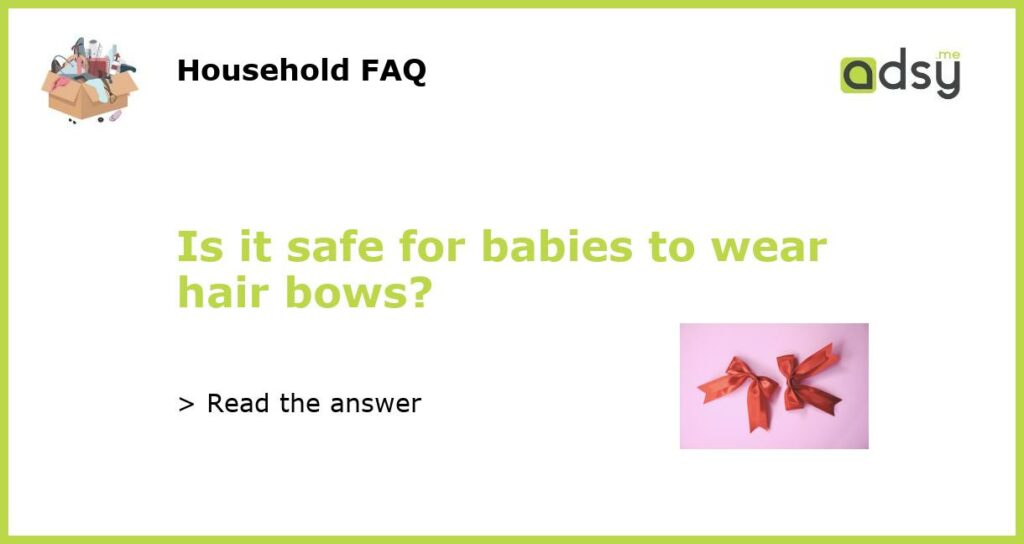What are hair bows?
Hair bows are a cute and popular accessory for little girls, especially for babies. They are a piece of fabric or ribbon, sometimes with a decorative design, that is attached to a clip or elastic band to be worn in the hair. Hair bows come in many different sizes, colors, materials, and styles. Some are simple and plain, while others are extravagant and bedazzled with gems and sequins.
Are hair bows safe for babies?
When it comes to safety, hair bows are generally considered safe for babies. As long as they are worn properly and with supervision, they should not pose a danger to infants. However, it is important to note that small parts on the hair clip or elastic band could potentially pose a choking hazard if ingested.
How can you ensure your baby’s safety when wearing hair bows?
Parents should always inspect hair bows for any loose or small parts that could come off and pose a choking hazard. It is also essential to make sure that the hair clip or elastic band is securely attached and will not come loose. Parents should always supervise their baby when wearing hair accessories to ensure they are not putting anything in their mouths.
Are there any potential risks to a baby’s development?
While wearing hair bows themselves do not pose a direct risk to a baby’s development, excessive use of hair accessories in general could potentially be harmful. Babies have sensitive skin, and wearing a tight elastic band or clip for extended periods could cause irritation or even damage the hair follicles.
Overall, hair bows are a cute and harmless accessory for babies when worn safely and correctly. Parents should always inspect and secure the hair clip or elastic band and supervise their baby when wearing hair accessories. While there are no direct risks to a baby’s development from wearing hair bows, it is important to be mindful of how frequently they are worn and ensuring they are not too tight or damaging to the baby’s skin and hair.






